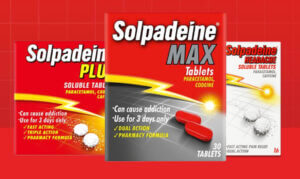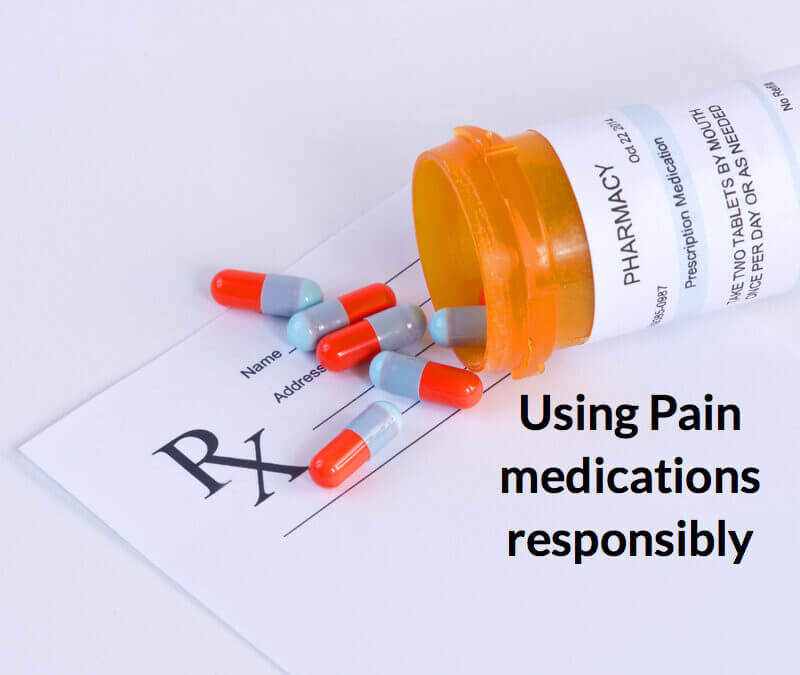Controlling Pain
Painkillers for foot conditions are important. This article is intended for the lay reader. Firstly, you can save time and money by avoiding an unnecessary appointment at the GP. GPs often provide ibuprofen as first-line treatment. They will also ask you to buy your own, as it does not need a prescription. Sensible ‘self-treatment’ for painful foot conditions reduces GP’s workload. We can call this first aid.
Secondly, most pain medications are inexpensive and available over the counter (OTC). This article provides some advice on avoiding paying higher prices. One should ideally not use NHS subsidy prescriptions to save the Nation’s health budgets.
Lastly, the discerning person can manage most things for a few days if certain guidelines are followed. I hope to offer you some tips in this two-part article on foot conditions. No one wants to experience pain. Painkillers can help and do have a place. Nonetheless, remember that not all conditions can be managed with painkillers. Medicines should be used responsibly to avoid some of their side effects.
All the discussions in this article apply to adults over 18. Seek professional guidance if you need to assist a minor, as doses and some of the drugs discussed must be used with caution in underage groups.

It is easy to become addicted to painkillers, perhaps no more so than codeine (an opioid). Ruth Santiago is a community outreach specialist with AddictionResource.net. This article has provided helpful information about addiction resources in the UK. Addiction is not limited to painkillers but sleeping and anxiety medications, as well as alcohol. In the present time of crisis with Covid-19 and lockdown, the use of alcohol has increased. Ruth informed me that this list was created for UK residents and their families. Their resource site can be found at https://www.
Common Analgesics
Prevention of damage
Using painkillers for some foot conditions may be helpful. Perhaps we should not call them ‘painkillers’ as they help manage pain but do not provide a cure. The condition you might be suffering from will have a cause, and this must be removed in the first case. Pain causes anxiety and stress and can become chronic in time. In Part 2, I will discuss some of the types of pain seen in the foot.
Medicines or drugs that relieve or eliminate pain are called analgesics. Remember, pain is there for a reason. The symptoms of pain will stop more damage from occurring by forcing us to rest. We limp or remove the foot off the ground so as not to increase the injury. Not all pain is bad. It is the body’s way of slowing us down. We should also look at pain as a preservation mechanism.
Four common painkillers for foot conditions
paracetamol (500mg), aspirin (300mg), ibuprofen (200mg), codeine (8mg)
Not all medicines work for ALL types of pain. Furthermore, not everyone can tolerate ALL medicines. This can render the painkilling medication of little value. The dose, given in milligrams, in brackets, measures the weight or content of their active ingredients. This article will only provide the basic information about each drug. The interactions and complex chemistry are not intended for deeper discussion. Each given milligram (mg) value is typical for all medicines. A ‘compound medicine’ is one with mixed ingredients. And so there are variations which, when blended, will alter with the combined weight of that medicine.
Paracetamol is probably the best-known analgesic. In the USA, it is called Tylenol, but its actual name is acetaminophen. The original discovery predates aspirin. By 1950, it was licensed in the USA for public use as a painkiller and in the UK in 1956. It has a mild effect on high temperatures. More details can be found on Wikipedia, but some of the details are necessary for lay understanding.
Aspirin is an older medication (1899) and also acts as an anti-inflammatory as well as for pain relief. It will also bring down high temperatures (antipyretic). Ibuprofen is more modern and arrived in the UK in 1969 to treat rheumatoid arthritis. Five years later, it was designated as a non-steroid anti-inflammatory drug or NSAID. An anti-inflammatory turns off some chemicals that create the acute inflammatory response. In removing some of the chemicals or hormones, the NSAID also turns off chemicals that stimulate pain. This is why anti-inflammatories have analgesic properties. There are other NSAIDs now available over the counter (OTC). These include Naprosyn and diclofenac, so the pharmacy is slowly opening up different possibilities for people.
Codeine is older than aspirin. It was discovered as an alkaloid of opium in 1832. Other alkaloids include nicotine, quinine and strychnine. The word opium gives a clue that codeine is a derivative of morphine. You cannot buy pure codeine over the counter without a prescription. The reason I have included it here is that it is mixed (compounded) with either paracetamol or ibuprofen as a drug that you can buy. Prescription doses are usually 10mg, 15mg and 30mg.
Changes to medicines
In the UK, codeine is now an issue that has parliamentary interest. Unfortunately, the class of drugs called opioids, branded as codeine, can become addictive. Modern society uses medication on an ever-escalating basis and, in some ways, follows the patterns that we have seen with antibiotics. Overuse! Additionally, one should be aware that overuse can reduce the effectiveness of analgesics. This has been found in managing headaches. Headaches can worsen the more you use the drug.
Reducing the cost of medicines
Some medications have brand names, such as Nurofen and Panadol, as two examples. These are proprietary names marketed for consumer sale and are listed on the packets sold under different names. The key ingredients common in all these proprietary sales are generic names, such as ibuprofen and paracetamol. Manufacturers have to make money for their investments. As time passes, a drug loses its patent. Other pharmaceutical manufacturers can use the same medicine and make it cheaper when this happens. You will see small packets of the medication described for pence rather than pounds. Buy a proprietary drug, and you may pay more. Look on the box at the ingredients and select one that is low-cost and has the generic drug.
Mixed medications

https://www.solpadeine.co.uk/products. One example of different products with similar and mixed ingredients
Companies are always looking for rebranding to overcome the loss of income. They can do this in two ways. They can introduce the same drug in a different form—liquid, capsule, dissolving tablet, capulet, gel, or cream. A bit of fancy marketing, getting a dog involved, portrays the benefit of a drug in a gentle but suggestive way (TV advert). We might feel sorry for the dog, but we are also made to believe performance improves as a benefit of taking that preparation.
Consumers have to be aware that the market is fickle. Most pharmacies do not push drugs on you. They are also mindful of cost, but knowing product placements in adverts is good.
The other method of making a drug sound better is to add a mild chemical to rebrand it as ‘better’. When added to paracetamol, caffeine might suggest it is EXTRA STRENGTH and, therefore, superior. At 65mg, two tablets usually give you 130mg of caffeine. Caffeine is a stimulant and can also increase your heart rate. In this Australian article (2010), concerns have been published about the effect of additional ingredients on caffeine. You could drink a cup of 250 ml coffee and get the same effect!
Mixing paracetamol and ibuprofen is no longer the concern it once was. Both drugs work in different ways and do not seem to have problems being mixed. Such combinations will cost more, and you must decide if you want to buy and use the two separately. The general idea is to prevent codeine from being used. Using codeine mixed with ibuprofen or paracetamol is available eg solpadeine. This proprietary drug has been around since the 1980s. It is useful and comes in different forms.
Solpadeine (illustrated) is the brand name of a range of analgesic medications containing various amounts of paracetamol, ibuprofen, caffeine and codeine. In the United Kingdom, four medicines use the Solpadeine name, with no common active ingredient between them. The range includes:
- Solpadeine Headache, containing paracetamol with caffeine
- Solpadeine Plus, a compound analgesic containing paracetamol and codeine (co-codamol), with caffeine
- Solpadeine Max, a compound analgesic containing paracetamol and codeine (with a higher codeine content than Solpadeine Plus) and caffeine
- Solpadeine Migraine, a compound analgesic containing ibuprofen and codeine

First line advice
Pharmacists are trained to serve healthcare professionals and the public. They will always be happy to advise you about your medication needs. It is common practice to ask if you are taking other medications because some medicines interact. Mixing drugs can produce undesirable effects that can make people ill. Do not take paracetamol with a compound (mixed) drug that also contains paracetamol. An overdose is severe and can damage the liver permanently.
What foot conditions can we use painkillers for?
Using painkillers for foot conditions has a list that is far from conclusive. Some of these conditions have been published as articles for Footlocker. In brackets, I have hinted at the effect on each condition as being anti-inflammatory or just analgesic alone. These are only a guide.
- wounds (analgesic)
- blisters(analgesic)
- Sprains (anti-inflammatory)
- Joint pain (anti-inflammatory
- Heel pain (anti-inflammatory)
- Fasciitis(anti-inflammatory/analgesic)
- nerve pain(anti-inflammatory)
- infection (i.e. ingrown toenail) (analgesic)
- tendon pain(anti-inflammatory)
More Resources from ConsultingFootPain
You can find more on Foot Pain on my website for a FREE DOWNLOAD and download a copy of my simple guides on location (click). Location Guide Foot Pain 2019 & Your Rough Guide to Pain (illustrated).
Using Fiction to Aid Real-Life Conditions—Using clinical conditions in fiction often makes clearer their impact on our lives.
There are two types of pain: acute and chronic. Acute pain is immediate but can settle down quickly. Chronic pain is, in some ways, more difficult to manage. Both are unpleasant. In Part 2, I will consider Acute and Chronic Pain.
Summary of Points
- Always read the packet and instructions first.
- Do not exceed the dose stated.
- Be aware of allergies and sensitivities.
- If you have stomach or other problems, seek medical advice before use.
- Don’t mix the medicines with others you take. Discuss with the pharmacist.
- Codeine products containing paracetamol should not be mixed with separate paracetamol.
- Take the most effective medicine early at the top dose recommended for acute pain.
- Use pain medication together with the principles of RICE
- If pain is not managed (worsens) after 3 days, seek professional help, or seek help if you feel unwell or have a high temperature.
- Gels and creams should not be used on open or infected wounds
- Be mindful of overuse and addiction
David is a full-time author, blogger and independent publisher of health matters and fictional works. You can find more about him on this site or his author website. Please share this article.

David’s book under his pseudonym Rc Blyth
You can read the story of Anna Taylor in Fatal Contracts and the Withered Hand, released in October 2024 – from Amazon books in eBook and paperback. You can also follow David on Facebook @davidtollafield, LinkedIn and X @myfootjourneys.
Thanks for reading the first of my two-part article. ‘Painkillers for Foot Conditions’ by David R. Tollafield.
Published by Busypencilcase Communications & Publications. Est. 2015 for ConsultingFootPain


What foot meds will not interfere with coumadin?
Editor comment: Try this site copy and paste
https://www.mayoclinic.org/diseases-conditions/deep-vein-thrombosis/in-depth/warfarin-side-effects/art-20047592